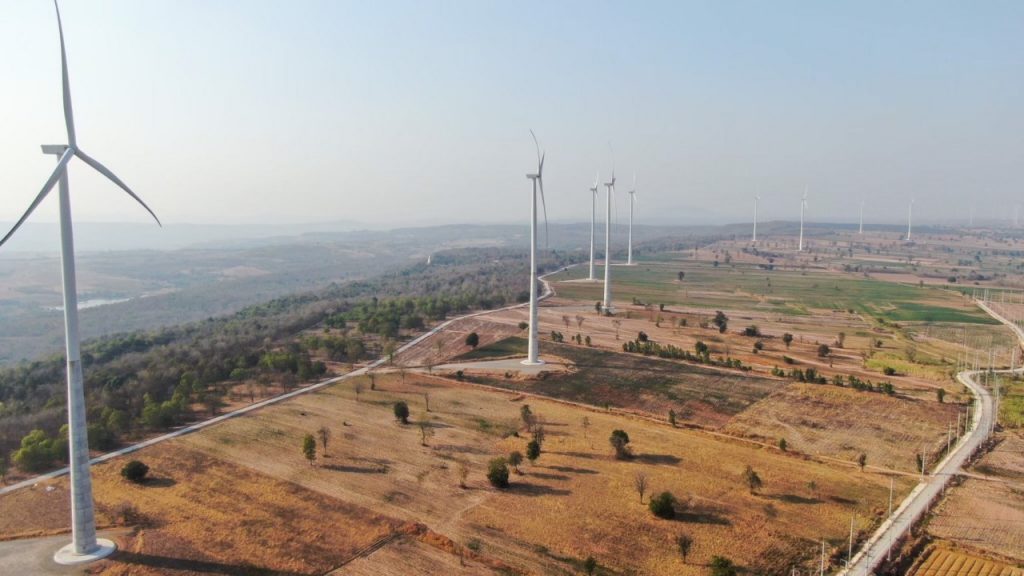Context
Since the Industrial Revolution’s transition to new manufacturing processes in the mid 18th Century, fossil fuels have become the dominant electricity source for most countries globally. Since then, various countries have become heavily invested in fossil fuel extraction as a source of income, and the infrastructure and systems developed to serve the extraction and burning of fossil fuels has further entrenched some countries from transitioning to cleaner energy sources. Although Thailand has been steadily decreasing its share of primary energy from fossil fuels since 2010, in 2021 it still relied on fossil fuels for almost 93% of its energy. The electricity mix in Thailand is dominated by gas and coal, accounting for 64% and 24% respectively, and only 7% of the country’s primary energy is from renewable sources.
The economy in Thailand relies heavily on tourism, accounting for around 5.6% of their gross domestic product (GDP). The tourism industry is also one of Thailand’s largest sectors of employment. Due to the steady influx of tourists and an increase in urbanisation more generally, development needs and nature preservation are in constant flux around the country. Thailand’s coastal areas are known for their abundance of coral reefs and diverse marine flora and fauna. These aquatic ecosystems and the livelihoods of inhabiting coastal communities are under pressure from aquaculture, overfishing, unregulated coastal development, and mass tourism. Furthermore, as these areas are along the coast, they are vulnerable to extreme weather events and sea-level rise as a result of climate change.
By supporting Thailand’s shift to renewable energy sources such as wind, the country, its inhabitants, and its local biodiversity will benefit for decades to come. Funding projects such as this one decreases Thailand’s dependency on coal and gas, and contributes to cleaner air quality, job creation in a developing green economy, and ultimately a future void of fossil fuels.
Project
This project is situated in the Nongwang, Bueng Prue and Samnaktakhro sub-districts of Thepharak District, Nakhonratchasima Province in Thailand. The project site is Northeast of Bangkok, and is a greenfield project, meaning that no prior activity was installed before the commissioning of this project.
The purpose of this project is to generate clean electricity through the utilisation of wind energy by implementing 90 megawatts (MW) of wind power from 30 Wind Turbine Generators (WTGs) of an individual capacity of 3 MW each. In this project, energy from wind is converted into mechanical energy and subsequently transformed into electrical energy. There are no GHG emissions associated with the electricity generation created from this project. The electricity generated by this project is exported to the Thailand National grid, which will displace an equivalent amount of electricity which would have otherwise been generated by fossil fuel sources.
Over and above the direct environmental benefits derived from renewable electricity generation, this project enhances economic wellbeing and the sustainable development priorities of the country. It creates employment opportunities during the construction and operational phases and leads to the development of infrastructure and monetary investment in the region.
Verification
Climate Solution #2
Onshore wind turbines
Onshore wind turbines generate electricity at a utility scale, comparable to power plants. They replace fossil fuels with emissions-free electricity.
Today, 314,000 wind turbines supply nearly 4 percent of global electricity, and it will soon be much more. In 2015, a record 63 gigawatts of wind power were installed around the world.
Onshore wind farms have small footprints, typically using no more than 1 percent of the land they sit on, so grazing, farming, recreation, or conservation can happen simultaneously with power generation. What’s more, it takes one year or less to build a wind farm—quickly producing energy and a return on investment.

